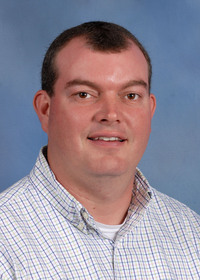Ten Steps to a Successful Mississippi 4-H Shooting Sports Program
Experience with youth development programs suggests that a successful approach to building a strong 4-H Shooting Sports Program involves 10 major steps.
- Identify a key leader or leaders in your county.
Conservation officers, wildlife and fisheries professionals, hunter education instructors, and officers in local gun clubs are good places to start. If you have no personal knowledge of these people, contact local sporting goods dealers, outdoor writers, National Guard units, or law enforcement agencies. Be sure to ask contact people if they have any additional suggestions of interested people even if they prove not to be interested personally. In general, it is best to look outside the present corps of 4-H leaders to recruit new Shooting Sports leaders. This expands the leadership base and recruitment potential of the county clubs. 4-H leaders must be well prepared, highly motivated, and interested in interacting with young people. Remember, interest in youth development is a key to locating good leaders. - Identify a group of potentially interested people with different backgrounds and skills.
These people should meet the criteria listed above and be willing to represent a broad range of shooting disciplines. Every major component of the Mississippi 4-H Shooting Sports curriculum should be represented by at least one person: archery, muzzleloading, pistol, rifle, and shotgun. - Invite the large group of potential leaders to an initial meeting to discuss organizing a county 4-H Shooting Sports Program.
Be prepared to discuss the philosophy, content, purposes, and objectives of the program. Assistance from state coordinators, a nearby member of the state 4-H Shooting Sports committee, or a leader from a successful county program is extremely valuable. At this meeting, inform those present that it is necessary for county trainers to attend a training workshop. - Form a county team of adults and encourage them to recruit others to be trained.
When they attend a training workshop, this team will learn how to recruit new volunteers and train young people. Work to select a strong leader to be the county coordinator. The group can benefit from having a preliminary discussion of the county’s target disciplines before they attend the training session. - Attend a training workshop.
Having a large county team ensures a high leader-to-youth ratio. A full team should accompany the county agent to the workshop. If a partial team attends, the members may become frustrated, and the program’s potential will be limited by the training of the people present. If an Extension agent does not attend, there will be no bond of common knowledge between the agent and his or her team. If your county does not have a full team, join with another county to produce a complete, cooperative team. - Workshops are a fun and exciting tool for delivering youth development and conservation messages. 4-H Shooting Sports Program leaders are different! Even instructors trained by other national organizations have benefited from the 4-H Shooting Sports training and, in turn, added to the richness of this program.
- Develop a county or multi-county plan.
This process will start with the training session. Identify which disciplines the young people want to participate in, set timelines to meet requirements for the state events, etc. Continue to refine the plan as soon as the team returns from training. Do not let more than a couple of weeks pass! The excitement and confidence built at the workshop may fade if too much time elapses from training to implementation. - Develop the necessary support for the program: human, financial, and material.
Equipment and facilities are not limiting factors if you apply a little creativity. Conservation officers, local gun clubs, and sporting goods dealers are excellent contacts. All can benefit from the exposure. Having a large county team requires constant recruitment of volunteers by volunteers and meaningful involvement of newly recruited team members. - Set the county plan in motion by recruiting leaders and young people.
Be prepared to have moderate success in the first attempt, and try to keep the size of the group manageable. Be alert for opportunities to recruit volunteers during the course of the program, and be sure to involve new volunteers quickly in activities appropriate to their interests and abilities. Keep them busy with tasks that can lead into more important activities. - Let the volunteers run the program.
The county Extension agent needs to maintain some presence, but the program should belong to the volunteers. The county planning committee will require agent oversight. Consider the evaluation process while the program is being planned, implemented, and critiqued. Encourage immediate debriefing of the leaders after each segment of the program is completed. - Draw advanced participants in the program into junior leadership and coaching roles.
This program, like other 4-H programs, needs to have advancement opportunities for the participants. The second-generation leadership will come from young people involved in leadership roles while they are members. Older 4-H’ers and parents who were actively involved and given increasingly important duties gained a valuable sense of responsibility and leadership skills. Recruiting must be continuous. Avoid overworking the experienced ones by constantly adding to the corps. Get your team of adults involved at the state level. Many opportunities exist for assisting the state organization.
From start to finish, the process of developing a local 4-H Shooting Sports Program should take a minimum of 3 to 6 months. Later, programs become increasingly easier, and a flow of new leaders develops naturally. Be sure to share new ideas with your state through newsletters and other forms of communication. Your innovation may result in success for other areas.
Publication 3774 (POD-06-22)
Prepared by the MSU Extension Center for 4-H Youth Development.
The Mississippi State University Extension Service is working to ensure all web content is accessible to all users. If you need assistance accessing any of our content, please email the webteam or call 662-325-2262.


